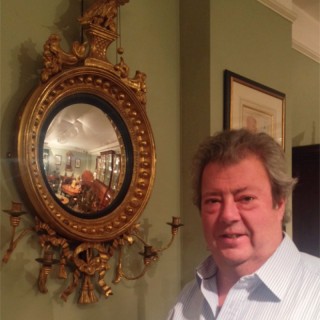How to differentiate an antique from a replica
Recognising replicas or reproduction pieces can be one of the most difficult tasks when dealing with antiques. Fakes or copies have long been in circulation, and some have been so well forged that it can be almost impossible for even a trained eye to determine the authenticity of a piece.
A considerable amount of skill and knowledge is required to spot a fake, and with the fraudulent items being so well crafted, it is not surprising so many individuals are convinced by, and invest in, these pieces.
However, there are a few guidelines to consider during your search for genuine antique furniture. These simple steps will encourage you to study various aspects of the piece, including the source of the item, the appearance, materials used and the provenance, among other factors.
Trustworthy antiques dealers
When trying to determine whether the antique you are interested in is genuine or a replica, it is important to consider the environment and individual you are purchasing it from.
Credited and experienced antique dealers possess a comprehensive knowledge of their subject, they would have well-researched and carefully purchased the item before considering selling it in their shop.  This attention to detail provides a protection of their name within the industry, as well as for their business, which is ultimately their livelihood.
This attention to detail provides a protection of their name within the industry, as well as for their business, which is ultimately their livelihood.
Genuine question
Choosing to purchase an item from an experienced and trusted antique dealer, should give you some certainty as to whether the item is genuine. It is highly likely the dealer will be confident in the information they are providing you with, so asking questions such as ‘do you think this piece is genuine?’ is encouraged.
The appearance of the piece
The look and form of an antique can present several indications, all of which should be considered before you decide whether or not to purchase the item. Genuine antiques are likely to have some representation of the longevity, and this representation comes in many forms.
Most antiques would have been handcrafted; this results in imperfections in symmetry and uneven surfaces. These demonstrate that the item has been made by a human, rather than a machine.
Wear and Tear
A genuine antique will have indications of wear; this may be a worn arm on a chair or a scratch or two on the surface of a table. This type of ‘damage’ contributes to the patina of the item, and amongst other factors, can help you determine whether the item is a replica or not.
Types of Wood
Most genuine antiques would have been made from more than one type of wood. This is because, at the time of creation, materials and woods, in particular, were rare and expensive. Craftsmen would reserve the most luxurious and pricey woods for the parts of the furniture that would regularly be seen, so for the underside or backs of pieces, a cheaper alternative was usually used. Often, but not always, replicas will be built from just one wood type.
Construction of furniture
- Machine made screws, round wired nails and staples are all sure sights of a modern repair or a replica. Screws were handmade well into the 19th century, and nails were always square cut, rather than round.
- The veneering of a piece is also a good indication of the pieces authenticity. The older the antique, the thicker the veneer. This is because veneers were hand-cut until the mid 19th century and they were usually attached using a form of animal glue. Veneers gradually became thinner as new technology and machinery became available.
- The joints used on an authentic antiques will have been meticulously constructed and reinforced using glue. The joints to look out for are dowels, mortise and tenons, as these will frequently feature on a genuine item.
Provenance of antique furniture
Provenance is one of the main tangible methods of identifying the authenticity of an antique and in the industry, it goes a long way into determining and confirming the genuineness. Well documented provenance provides buyers and sellers with a detailed record of the objects lifetime, including owners, dealers and galleries that have had the item at some point. Some types of provenance can also prove the maker of an item and where and when it was made.
Careful examination
It is important to handle the piece you are considering, turn it upside down so that you can to investigate the underside. Carefully study the patina to determine whether it is genuine by running your fingers all over the item. An antique may have a characterful grain, but its likely that due to its age that the finish will be smooth and soft to touch. A replica may have the occasional sharp edge or a grain with raised sections as the wood is new and hasn’t been worn at all.
Experience is all
Ultimately, after conducting research and gaining as much knowledge as possible about the genre you are considering, determining whether or not an item is a genuine or a replica comes down to instincts and experience. There is a lot to be said for ‘gut feelings’.
 Have we missed any tell-tale signs of a replica? Let us know via our social media channels!
Have we missed any tell-tale signs of a replica? Let us know via our social media channels!
By Patrick Sandberg
Located in one of the most prestigious and popular parts of London, Kensington Church Street is an antique enthusiast dream and Patrick Sandberg Antiques is in the heart of it. Patrick has had a lifelong passion for and has been dealing with antiques for over 25 years, his comprehensive knowledge and extensive collection of 18th century Georgian and early 19th century Regency furniture is one of the greatest in central London.
